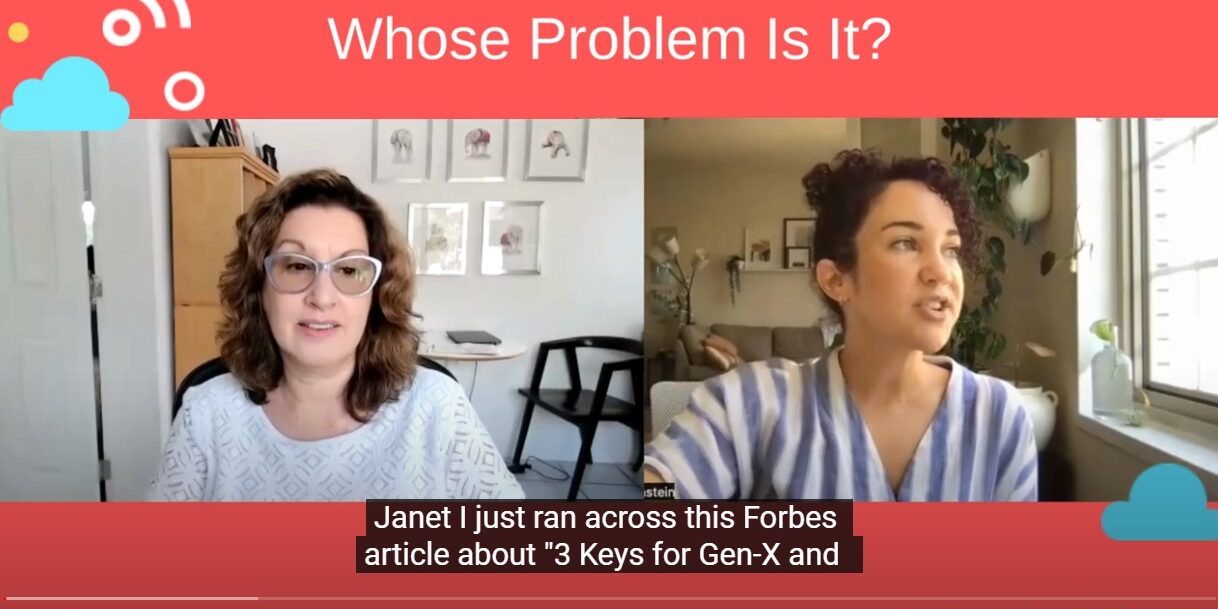Bridging the Generation Gap: Whose Problem is It?
In today’s workplace, a multigenerational workforce is the norm. While this diversity of experience and perspective can be a strength, it can also lead to challenges, particularly when it comes to communication and collaboration between generations.
A recent Forbes article explores this very issue, prompting Rachel Hornstein (a Millennial) and me (borderline Gen X/Boomer) to delve into the question: who is responsible for bridging the generational gap in the workplace? Check out our video conversation here.
I reject the notion of assigning blame, since this doesn’t help the situation nor does it start to solve the issue. Instead, I believe the onus falls on leadership to take charge and solve this critical challenge.
“Individual contributors” in the workplace, regardless of generation, are unlikely to take it upon themselves to solve a problem they may perceive or have the ability to address. This is leadership’s responsibility, and I like to draw an analogy to parenting; the parents are “in charge” in the workplace, and responsible for guiding and supporting their staff. Leaders, no matter what their age, must take the initiative to foster a collaborative and inclusive work environment for everyone.
The first step is for leaders to be convinced that the current generational gap presents a problem that needs to be addressed – by them. Some leaders may be resistant to this idea, but it’s important to adopt the mindset of Simon Sinek, the motivational speaker and author who famously advocates for starting with “why.” He suggests that older leaders need to understand why bridging the generational gap is crucial for the success of the organization (and is in their own best interest). (If you haven’t seen this video, I recommend watching it now.)
How can leaders translate this understanding into actionable steps? Here are some key strategies that I recommend:
- Promote Open Communication: Leaders can create a culture of open communication where all employees feel comfortable expressing their ideas and concerns, regardless of age. This might involve creating regular forums for open discussion, implementing anonymous feedback mechanisms, or establishing mentorship programs that pair experienced professionals with younger generations.
- Embrace Flexibility: Recognizing that different generations may have different work styles and preferences, leaders can embrace flexible work arrangements that cater to these variations. This could include offering remote work options, compressed workweeks, or flexible start and end times.
- Invest in Training and Development: Leaders can invest in training programs that equip employees of all generations with the skills they need to collaborate effectively. This might include training on communication styles, generational differences, or project management tools.
- Celebrate Diversity: A diverse workforce is a valuable asset. Leaders can cultivate an environment that celebrates the unique strengths and perspectives that each generation brings to the table. This could involve recognizing and rewarding employees who demonstrate exceptional collaboration across generations.
By taking these steps, leaders can play a pivotal role in bridging the generational gap and fostering a more collaborative and productive work environment. When Gen X, Y, and Z work together effectively, organizations can leverage the full potential of their workforce and achieve greater success.
Beyond the video
This short snippet of a conversation about generational gaps in the workplace covers a multifaceted issue. While my focus is on leadership, it’s important to acknowledge that all employees have a role to play in fostering collaboration. Here are some tips for younger employees, who are often “individual contributors”:
- Practice active listening: Pay close attention to what your colleagues are saying, both verbally and nonverbally. Seek to understand their perspectives, even if they differ from your own.
- Be open to feedback: Be receptive to constructive criticism and willing to adapt your approach based on input from others.
- Embrace technology: Familiarize yourself with the collaboration tools and platforms that your organization uses.
- Seek out mentors and sponsors: Mentors can provide guidance and support, while sponsors can advocate for your professional development.
- Be a mentor yourself: Share your knowledge and experience with younger colleagues.
By working together, teams of all ages can build a collaborative and inclusive workplace that benefits everyone. While bridging the generational gap is an ongoing challenge, it can be overcome with intention and effort.






